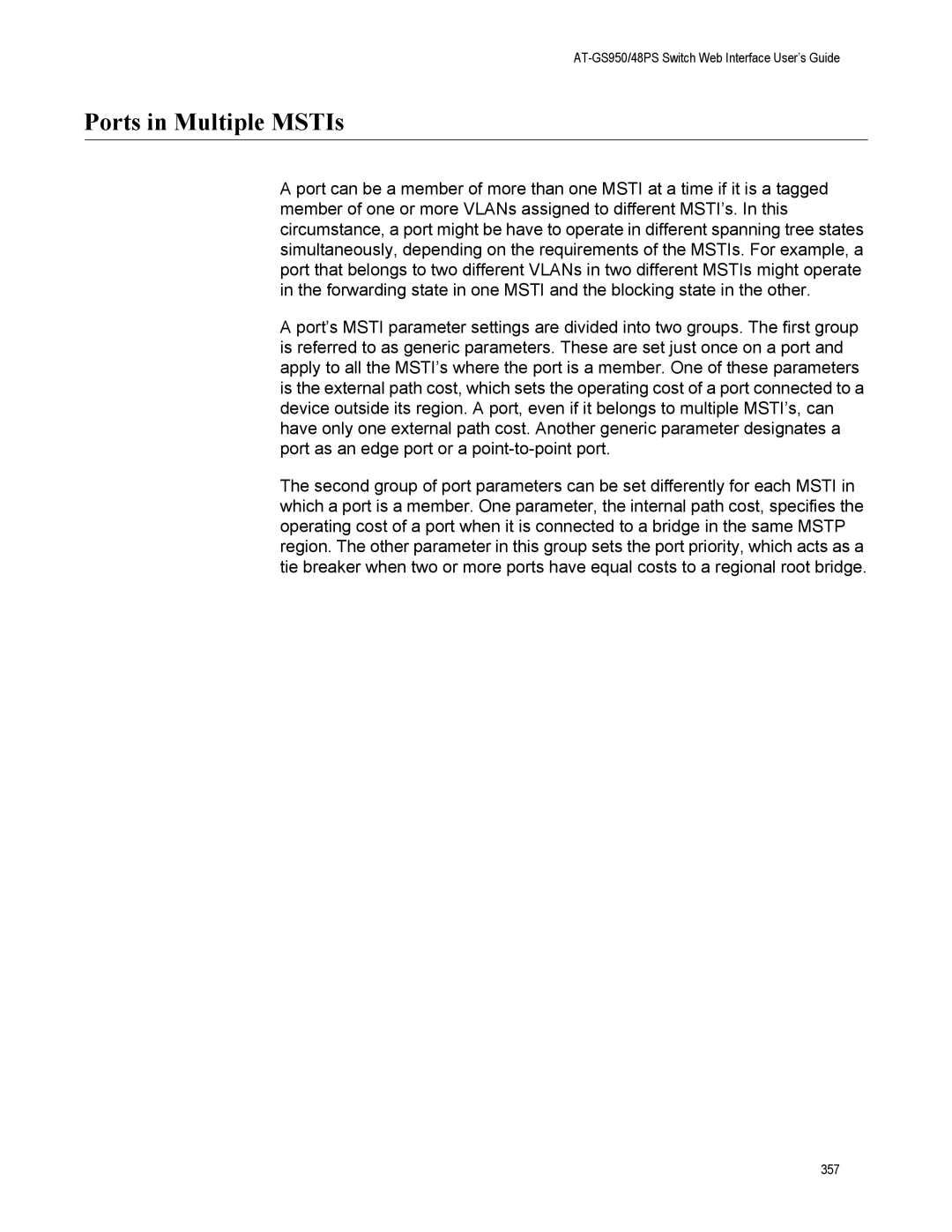AT-GS950/48PS Switch Web Interface User’s Guide
Ports in Multiple MSTIs
A port can be a member of more than one MSTI at a time if it is a tagged member of one or more VLANs assigned to different MSTI’s. In this circumstance, a port might be have to operate in different spanning tree states simultaneously, depending on the requirements of the MSTIs. For example, a port that belongs to two different VLANs in two different MSTIs might operate in the forwarding state in one MSTI and the blocking state in the other.
A port’s MSTI parameter settings are divided into two groups. The first group is referred to as generic parameters. These are set just once on a port and apply to all the MSTI’s where the port is a member. One of these parameters is the external path cost, which sets the operating cost of a port connected to a device outside its region. A port, even if it belongs to multiple MSTI’s, can have only one external path cost. Another generic parameter designates a port as an edge port or a
The second group of port parameters can be set differently for each MSTI in which a port is a member. One parameter, the internal path cost, specifies the operating cost of a port when it is connected to a bridge in the same MSTP region. The other parameter in this group sets the port priority, which acts as a tie breaker when two or more ports have equal costs to a regional root bridge.
357
